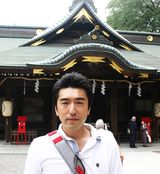Japanese Language Quirks: Logographic and Phonetic Characters
- 2024/01/10 23:36

Japanese Language Quirks:
Logographic and Phonetic Characters
Let's delve into the essence of the uniqueness of the Japanese people through the perspective of written language. In most parts of the world, languages are represented by a single set of characters. However, Japanese people uniquely utilize three types of characters: hiragana, katakana, and kanji. Some might argue for the inclusion of romaji and numbers, making it five!
Yet, the significance lies not merely in the number of characters used. Japanese people simultaneously employ two distinct types of characters: hiragana representing phonetics and kanji representing meanings. Kanji characters encapsulate imagery and meaning within each symbol. For example, the character "我" (ware) seemingly denotes oneself, but its true meaning runs deeper. Comprising a serrated blade reminiscent of a saw and a spear, it signifies both a powerful weapon and a dangerous entity. Thus, using "我を出す" (bring out oneself) implies self-assertion, while "我を捨てる" (discard oneself) conveys the inherent danger of "我" (ware).
In contrast, phonetic characters represent sounds without intrinsic meanings. They serve as a straightforward way to convey pronunciation. The flexibility and adaptability of the Japanese language stem from the simultaneous use of these two character types. While some argue that ideographic characters may hinder computational imaginative thinking in scientific contexts, the Japanese people exhibit a flexible and adaptable mindset in utilizing both types of characters. This linguistic versatility might provide additional evidence for the adaptability of the Japanese people on a broader scale.

(Shrine Person Operator, Representative of Culture J, Ltd., Hidetoshi Tojo)
Hidetoshi Tojo was born in 1972 in Saitama Prefecture and is the representative director of Culture J, Ltd. He is the direct descendant of Hideki Tojo and the 18th head of the family. Exploring a unique social welfare model in Japan, he turned his attention to the presence of shrines and Shinto. Advocating for cultural tourism through shrines, he aims to revitalize new local communities and cultural entertainment.
1: "What is True Culture? Understanding Japan"
2: Real Meaning of Foundation Day of Japan as a Nation
3: There is a great leap forward after overcoming a crisis.
4: Let's return to the spirit of "Mottainai"!
5: "Understanding Japan's Obon Festival"
6: "The Pink Book for Fulfilling the Whims of Adult Women"
7: "The cultural roots of Japanese New Year
8:Rekindling the Spirit of Herbivore Men Through Taiko Drumming?
9: "Publishing 'Proof of Japanese Identity' - Column by Hidetoshi Tojo, No. 10"
10: "Publishing 'Proof of the Japanese' - Part 2 - Hidetoshi Tojo's Serial Column No. 11"
11: "For the Japanese, What Does 'Work' Mean? - Hidetoshi Tojo's Serial Column No. 12"
12: Learn from the keen insights of our predecessors – Hidetoshi Tojo's Column No.13
13: Japanese Language Quirks: Logographic and Phonetic Characters
14: "What Does 'Shikinen Sengu' Mean to the Japanese? - Hidetoshi Tōjō's Column No. 15"
15: Cultivation Required in a Global Society? - Column by Hidetoshi Tojo, No.16"
16: "Publication of 'Shrine Tourism'!! Hidetoshi Tojo's Serial Column No. 17"